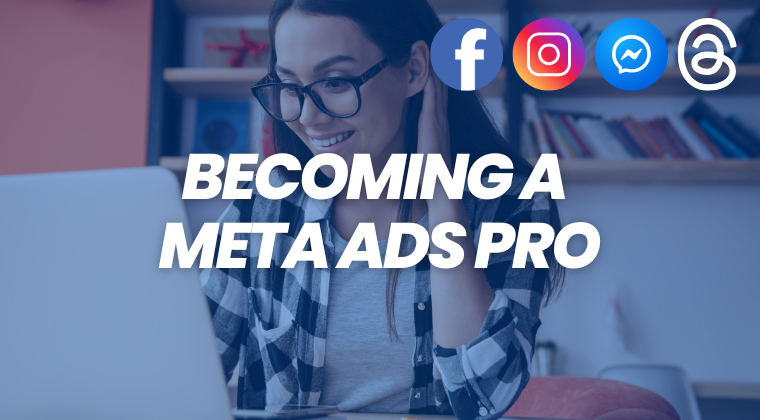Key Concepts & Terminology for Meta Ads (No Judgement Here)
If you’re already familiar with Meta Ads, then you’re off to a good start. This can be a short refresher for you.
Pat yourself on the back.

If you’re not familiar with Meta Ads-- that's totally cool, you're in the right place. This post should give you a nice jumpstart.
Let's start with the basics.
Meta
What is Ads Manager?
Ads Manager is the control station for all your ad campaigns. It’s where everything lives. It’s where you execute. It’s where you manage. It’s where you likely monitor performance.
The 3 Levels of a Meta Ads Campaign
There are 3 levels to a Meta Ads campaign, and we’ll touch on the most important functions of each level really quickly:
- Campaign Level: This is where you pick your general goal (aka objective). Objective choices include awareness, engagement, traffic, leads, app promotion, and sales. At this stage, you can also control the budget, if you choose. Campaign-level budgeting is abbreviated as CBO.
- Ad Set Level: If you’re not controlling the budget at the campaign level, then you’re doing it here. Ad sets are where you set your targeting, layering in interests, behaviors, demographics, retargeting audiences, and Lookalikes. More importantly, this is where you select what you’ll optimize for (e.g., awareness, traffic, engagement, or conversions).
- Ad Level: This is where your actual ads live. Each ad set can contain up to 50 ads. Ads are what users see on their feeds, and this is where creativity comes into play.
Key Metrics in Ads Manager
Once you turn on your campaigns, ad sets, and ads, you’ll want to toggle through columns and breakdowns to monitor performance. Here are a few important metrics:
- Impressions: The number of times your ad appeared on a user’s screen.
- Reach: The number of unique users who saw your ad.
- CPM: The cost per 1,000 impressions. Lower CPMs usually indicate that Meta rates your ad favorably.
- Conversions: Actions you optimize for, such as purchases, add-to-carts, leads, or custom events.
- CPA: The cost associated with the specific action you’re optimizing for. More often than not, CPA in conversation refers to a conversion event.
Terminology and Abbreviations
There’s a ton of terminology and abbreviations that we use in our courses. These are the main ones (not already included above):
Audience Network = series of sites / apps that show Meta Ads, think Display Network
Broad / Wide Open = very little targeting, think all the US or all Americans over 35+
Click vs Link Click vs Landing Page View (in order) = any click, any click to a link, any click to a link that triggers the pixel
Conversion Campaign = campaigns that optimize towards on-site conversion events
Conversions API = server side tracking
Custom Audiences = site / engagement / list-based retargeting audiences
Dynamic Creative / Ads / Catalog Sales = ads or creative that are served dynamically based on the specific user
Engagement = any action on a post or ad
Instant Forms = native forms used in lead gen objective campaigns
Lookalike = a similar audience based on a Custom Audience, the lower the % the more similar to the root audience (goes up to 10%)
Primary Text / Headline (in order) = the copy above the image / video, the shorter copy below the image / video (on a FB Ad)
Prospecting = a campaign that targets people who’ve never heard of your brand
ROAS = Return on Ad Spend, revenue ÷ ad spend
Stories vs Reels = a lot of subtle differences, but the main ones are length, engagement, format, and video editing
Unique CTR vs CTR (in order) = CTR based on reach, total CTR based on impressions
View Content = product page views
ABO = Ad Set Level Budgeting
AOV = Average Order Value
ATC = Add to Cart
CA = Custom Audience (aka Retargeting Audiences)
CAPI = Conversions API
CBO = Campaign Level Budgeting
CPC (all) = Cost per any click (not just link clicks)
LAL = Lookalike audience
LPV = Landing Page Views (aka link clicks that trigger the website pixel)
LTV = [Customer] Lifetime Value
UTM = Universal Transverse Mercator (the tracking parameters after a ? in a URL)
VC = View Content (Product Page views)
Bookmark this post for future updates. This is a living, breathing blog post.
Interested in learning everything you need to know about Meta Ads? Get certified via our flagship course Becoming a Meta Ads Pro

